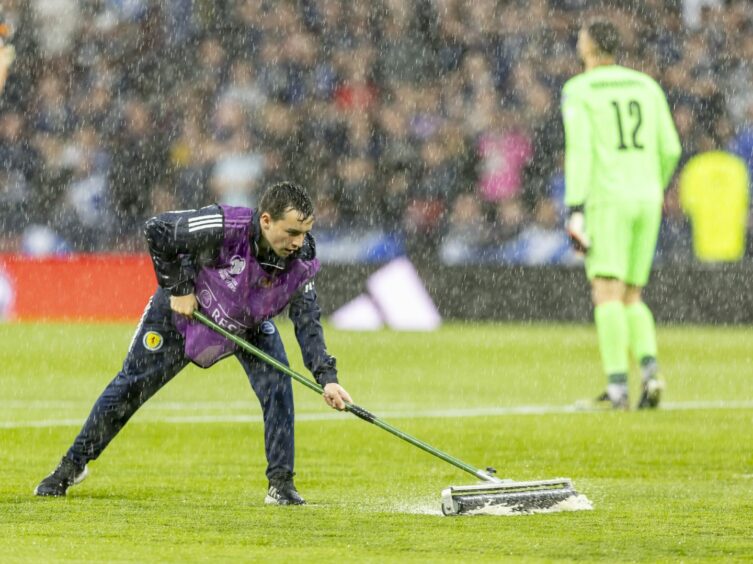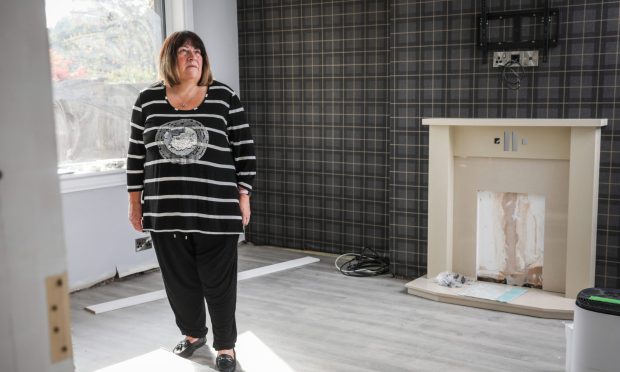I was through in Glasgow the other week at Hampden Park for the Scotland men’s national football game.
Well done to the boys on another great result for the team.
As the kick off got closer I did have to take a moment to check I was in the right place.
Mother of all downpours!
So much rain came down I was thinking the pitch was being flooded intentionally for a game of water sports and not the fitba.
I don’t recall ever seeing so much rain come down so heavily, in such a short space of time.
As our friends across the Irish Sea would say, it was definitely coming down with a passion!
Impact of intense rain on gardens
This seems to be becoming the norm these days when it rains not coming down nice and gentle but hammering so.
It doesn’t really do our gardens any good, especially just now when they need it after weeks and weeks of dry weather.
They are not getting the time for the rain to soak into the soil but running off the hard ground and away sometimes causing flash flooding.
Afterwards, it was amazing to see the difference on the plants in the veg plot, dahlias and bare rooted trees that were planted over the winter months, plus the many others planted in spring.
My rain gauge at home said overnight we had received 9.4mm or just under half an inch which was much needed and appreciated.
It was quite a bit of rain within only a few hours so I was fascinated to see when I dug a hole in the ground the next day that the soil was only wet in the top 8cm/3in, still very dry below that.
When the rain is not enough
It’s very easy for us gardeners to think that all was well again after that downpour but went to show that it was only enough to have reached half the depth of a recently planted one litre sized pot.
We don’t want to flood new plantings as we want to encourage their roots to go out searching for moisture, putting on a good root system that will benefit its health and survival in the long term.
But we do need to make sure they have adequate moisture to sustain the foliage.
This is where you are maybe expecting me to give you a straight forward answer on how to achieve this but I’m afraid I’m not, as there isn’t one.
Before I give what I hope will be a little help, first its maybe an appropriate time to consider our attitude to water differently.
We all joke that it always rains in Scotland.
But Mother Nature doesn’t always guarantee us a steady supply as can be seen in the reservoirs of our country that at the moment aren’t as blessed with the amounts of water they usually have.
So maybe we should be treating this resource a bit more preciously.
Cost of clean water
It’s beautiful and clean water that comes out of our taps but doesn’t just fall down that way and must be chemically treated to be so, a process that costs money and effort accounting for 1% of our total national carbon emissions.
I love my garden but personally I would rather have enough water to drink, cook and wash, save some pennies and to my bit for the environment rather than waste throwing water unnecessarily over plants.
I never bother watering established plants.
For me I’d go as far to say this is those that have been in the ground for over a year.
Exceptions would be fruit trees and shrubs that maybe need a drink to produce good crops.
Also any plants during spells of drought that are wilting, not producing expected amount of growth or pots that are light in weight or blowing over in the wind.
Plastic lawns: the ultimate gardening crime!
Plants growing in containers packed full of roots searching for a drink, may need watered daily than if growing in the ground.
When it comes to soils, just because the surface is dry doesn’t necessarily mean it’s time to get the watering can out.
Check how damp it is further down by scrapping the soil to the depth of a knuckle where the tips of the roots actually are.
If your soil is light and sandy, your plants will benefit from smaller amounts of water given more frequently than if like me you garden on a heavier clay soil.
Water at the beginning or end of the day when it’s cooler and where less of the water you’ve applied will be lost to evaporation.
Please don’t waste water irrigating your grass either, our lawns are so resilient and will soon green up if currently turning yellow.
And whatever you do please don’t think committing the ultimate gardening crime laying artificial grass as an answer either.
According to Nature Scot, to make one square metre of fake grass actually uses approx 3,744 litres of water, equivalent to watering a real lawn for 18 years.
Such a waste, also removing the home to million of lives within the soil affecting the bees and birds that rely on them as a food source.












